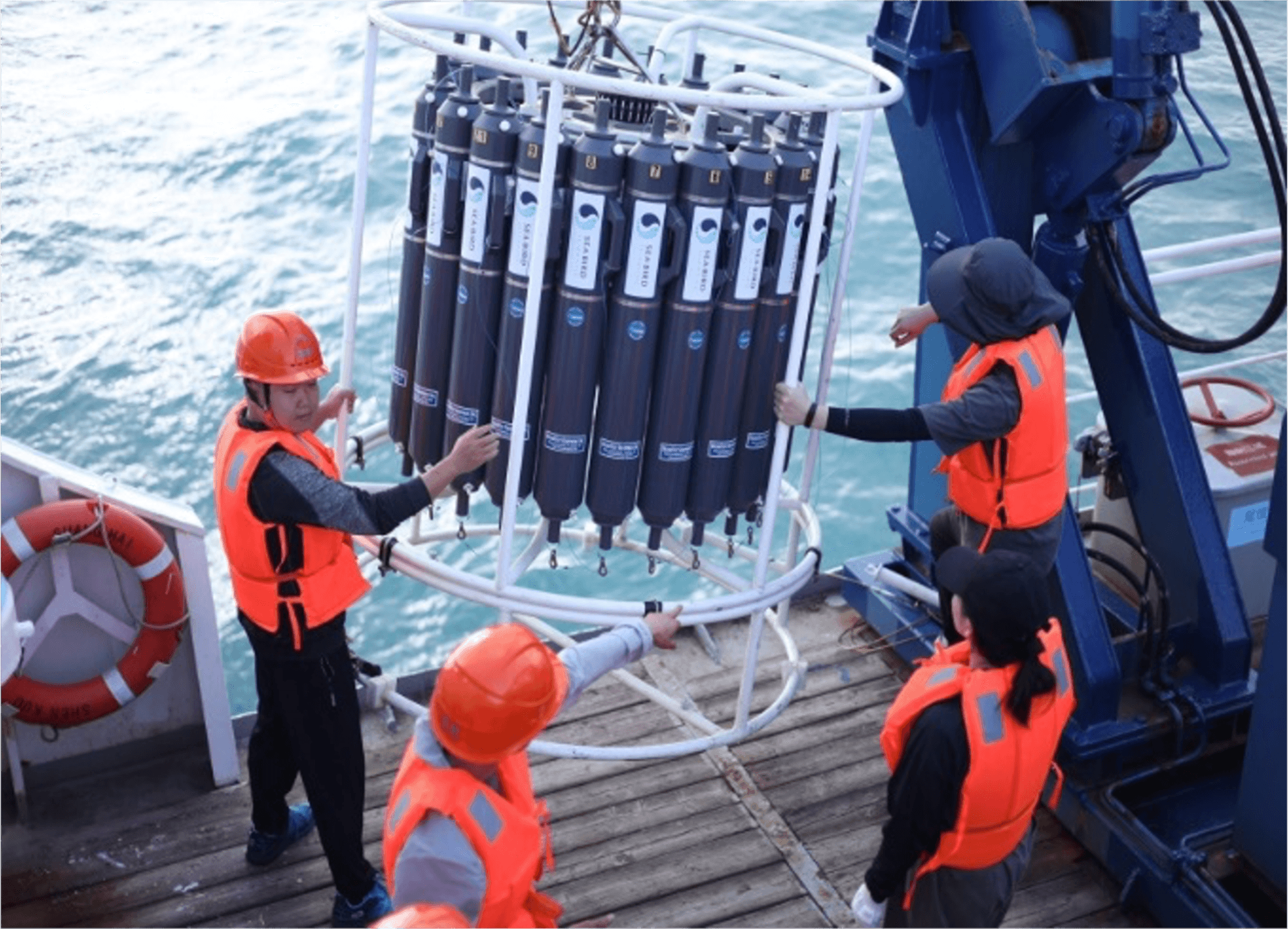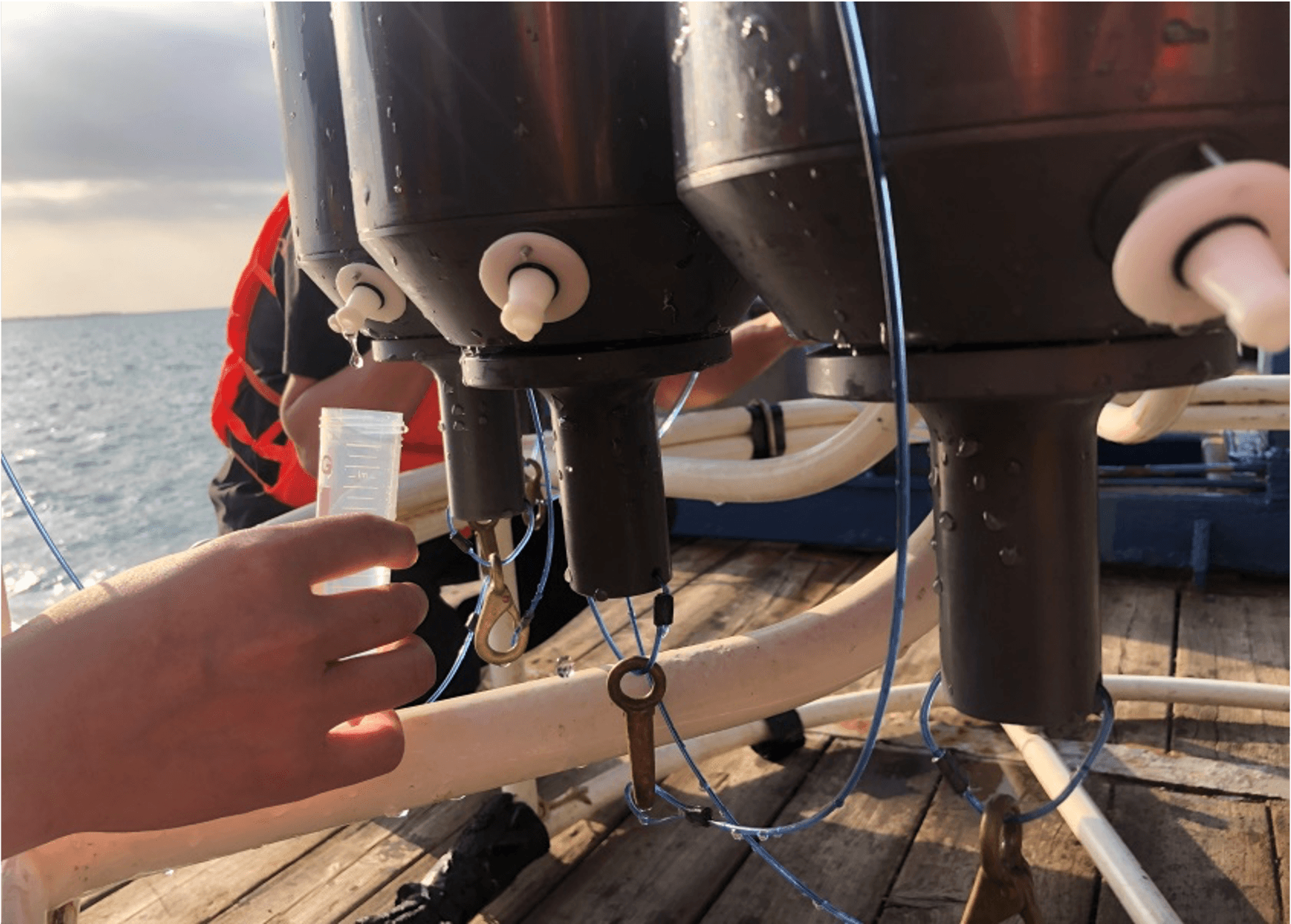E-mail Us
Home / Science & Technology / Exploration Tools / CTD
CTD stands for conductivity, temperature, and depth, and refers to a package of electronic devices used to detect how the conductivity and temperature of water changes relative to depth. It’s an essential tool used in all disciplines of oceanography, providing important information about physical, chemical, and even biological properties of the water column. CTDs often include additional instruments as well, such as sensors to measure oxygen, water pH, nitrate and chlorophyll levels, turbidity, and water current velocities. All of these measurements are looked at side-by-side in relation to depth.
On exploration vessels, a CTD is often attached to a larger metal water sampling array known as a rosette that is lowered into the water via a cable. Multiple water sampling, or Niskin, bottles are often attached to the rosette as well. These bottles are open when the rosette is deployed and can be triggered to close, collecting water samples at specific depths for later analysis.


Some CTDs can transmit data back to a ship in real time, while others store the data until the instrument is recovered and data are downloaded for review. Data collected from a CTD are used to generate a profile of water column characteristics relative to depth. By comparing the data in situ at each depth, the physical characteristics of the water can be described. From these data, scientists can also detect anomalies (or changes) in the water column that warrant further investigation. Thus, CTD data plays an important role in helping scientists make decisions about where to explore next.
CTDs are common equipment in oceanography because they measure chemical and physical properties of the water column, which serve as a foundation for understanding the marine environment. Combinations of temperature and salinity data are used to define water masses as part of the bigger picture of ocean circulation, which can also have implications for studying and understanding changing environmental conditions.
CTD data can help us understand biological processes, such as the growth of algae, or the distribution of organisms such as fish that rely on specific temperatures and salinities for normal biological routines such as reproduction. Knowledge obtained from CTD devices can, in turn, lead to a better understanding of things such as where species occur and how they are distributed in the ocean.
Ocean explorers also use CTD measurements to detect evidence of volcanoes, hydrothermal vents, and other deep-sea features that cause changes to the physical and chemical properties of seawater. CTD data are also important in acquiring sound velocity profiles of the water column to apply to multibeam sonar or
other sonar data for accuracy of bathymetry measurements.